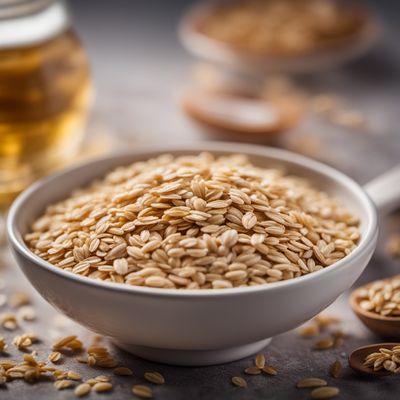
Ingredient
Potato starch
The Versatile Powerhouse: Unleashing the Potential of Potato Starch
Potato starch is a fine white powder extracted from the starch-rich potatoes. It is odorless and tasteless, making it an excellent choice for thickening dishes without altering their flavor. With its fine texture, it dissolves easily in cold water, making it ideal for creating smooth sauces and gravies. When used in baking, potato starch adds moisture, tenderness, and a light texture to cakes, cookies, and bread. Its ability to withstand high temperatures without breaking down makes it a reliable choice for frying and deep-frying.
Origins and history
Potato starch has been used for centuries and has its roots in South America, where potatoes were first cultivated. The Incas were known to use potatoes as a staple food, and it is believed that they also discovered the process of extracting starch from potatoes. Over time, potato starch gained popularity in Europe and became a vital ingredient in various traditional dishes, such as gnocchi and dumplings.
Nutritional information
Potato starch is a good source of carbohydrates and provides energy. It is low in fat and cholesterol-free, making it a suitable choice for those following a low-fat or cholesterol-restricted diet.
Allergens
Potato starch is gluten-free, making it a safe option for individuals with gluten sensitivities or celiac disease. However, it is important to ensure that the potato starch is produced in a gluten-free facility to avoid cross-contamination.
How to select
When selecting potato starch, look for a reputable brand that ensures high-quality standards. Check the packaging for any signs of moisture or clumping, as this may indicate poor storage conditions. Opt for organic potato starch if you prefer a product free from pesticides and other chemicals.
Storage recommendations
To maintain the freshness and quality of potato starch, store it in an airtight container in a cool, dry place. Avoid exposure to moisture, as it can cause the starch to clump. Properly stored, potato starch can last for an extended period.
How to produce
While it is possible to produce potato starch at home, it requires specialized equipment and expertise. It is recommended to purchase commercially produced potato starch for consistent results.
Preparation tips
When using potato starch as a thickening agent, mix it with a small amount of cold water before adding it to hot liquids to prevent clumping. For baking, replace a portion of the flour with potato starch to achieve a lighter texture. Experiment with different ratios to find the perfect balance for your desired outcome.
Substitutions
Cornstarch can be used as a substitute for potato starch in most recipes, although it may result in a slightly different texture. Arrowroot starch and tapioca starch are also suitable alternatives.
Culinary uses
Potato starch is commonly used as a thickening agent in sauces, soups, and gravies. It is also a key ingredient in gluten-free baking, providing structure and moisture to cakes, cookies, and bread. Additionally, potato starch is used in the production of noodles, dumplings, and other starchy foods.
Availability
Potato starch is widely available in grocery stores, supermarkets, and online retailers worldwide.
More ingredients from this category

Oat starch
The Versatile Powerhouse: Unleashing the Potential of Oat Starch

Rye starch
The Versatile Rye Starch

Wheat starch
The Versatile Powerhouse: Unleashing the Potential of Wheat Starch

Tapioca starch
The Versatile Tapioca Starch

Maize starch
The Versatile Thickener: Maize Starch

Rice starch
The Versatile Powerhouse: Rice Starch